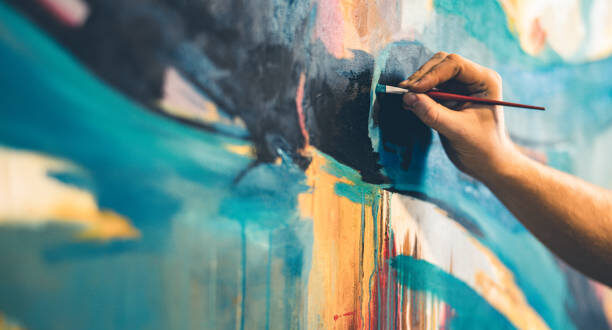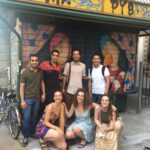Empower-Art: Migrant and Diaspora Empowerment through arts
If we notice, the idea of the migrant and political refugee is very often connected to a dichotomous label: before arriving in the “host country” the migrant is described by many mainstream media as a victim who lives endlessly in a tent city; on the other hand, once they have arrived in the West, they are subjected to a xenophobic narrative that represents them as a problem. We speak of these people as an indefinite, uniform, and depersonalized agglomeration.
We believe that art is a way to show alternative narratives to those proposed by a xenophobic conception of the migrant. That’s why photography, illustration, painting, street art, music, fashion are arts that, first of all, do not entirely belong to the “spoken” language and therefore can both navigate beyond and overcome linguistic barriers. Furthermore, art can be a great tool of empowerment: each work expresses the subjectivity of the artist who therefore emerges from the indistinct mass to reassert himself or herself as a unique person.
This is the case of the illustrator and graphic journalist Takoua Ben Mohamed who will be the art director of the Otto per Mille 2021 campaign of the Waldensian Church – Union of Methodist and Waldensian Churches. In her comics and illustrations, she narrates stories of integration and rights promoting both intercultural and interreligious dialogue. Indeed, “Under the Veil” is an autobiography that traces with irony the daily routine of a girl who has freely chosen to wear the veil in Italy.
Even Aya Mohamed, a student of Political Science, social activist, and fashion lover speaks about the fact that she is “born in Egypt and raised in Milan” (as she writes on her Instagram profile) by using a very singular tool, namely fashion! Aya uses her blog – milanpyramid – to speak about fashion, diversity, and representation. In an episode of the podcast Anticorpi (The Vision) she declares that she has opened the blog to express herself and to use it as an opportunity to give voice to all the Muslim girls who live in Italy and do not feel represented either on traditional or social media. Aya considers fashion as the tool that allows her to express herself without having to speak and make her choices clear and visible: “Taking care of one’s appearance” says Aya “is not a superficial thing because it is the way allowing us to make our own choices so that someone else does not choose for us ”.
The need to make one’s choices explicit and to search for one’s self roots is also carried out collectively by Black Quantum Futurism in Geneva. It is a multidisciplinary group that combines African and Afro-American culture with the study of quantum physics. Particularly, the Black Quantum Futurism explores the connections between media, DIY aesthetics, and activism in migrant communities, as Claudia Galal of Griot explains. The art produced by the collective ranges from writing to music, from the visible arts to research projects, and aims to give a positive meaning to those individuals, familial, social, and communal experiences that are perceived as disturbing and negative.
You may wonder: how is it possible to carry on these collective experiences during Covid times?
Well, last November a group of about 40 cities promoted the launch of an online cultural and artistic initiative which resulted in the drafting of the “Charter of Rome”. The project’s purpose is to be global and to get rid of the omnipresent Eurocentrism in the impetus to fully include the voices of all cultures. Specifically, while the Indian artist Jasmeen Patheja along with feminist and LGBTQI + associations will address the themes of gender-based violence in a podcast, in Rome we could see the anti-monument created by Marinella Senatore and Johanne Affricot moving around the city and opposing Roman architecture of power, embodying instead the fluidity and intersectionality of today’s cultures.
Once the pandemic crisis has been overcome, we sincerely hope that the “right to participate fully and freely in cultural life” can restore the dynamism of our cities and give legitimacy and voice to all the people who live there.
Sources:
- https://www.agi.it/cronaca/biennale_venezia_artisti_profughi_rifugiati-5460351/news/2019-05-10/
- https://www.nev.it/nev/2021/04/14/otto-per-mille-valdese-la-campagna-2021-allinsegna-del-cambiamento/https://www.corriere.it/cultura/20_ottobre_05/takoua-ben-mohamed-sfruttamento-ma-anche-speranza-l-altra-via-cambogia-28e1a5e4-071d-11eb-a92a-d6e5260ddebb.shtml
- https://www.beccogiallo.it/prodotto/sotto-il-velo/
- https://griotmag.com/it/le-orchestre-della-trasformazione-nuovi-immaginari-artistici-per-lagenda-2030/
- https://griotmag.com/it/il-collettivo-artistico-black-quantum-futurism-al-cern-di-ginevra/
- https://www.youtube.com/watch?v=uW8PEHp3kxo&t=105s


